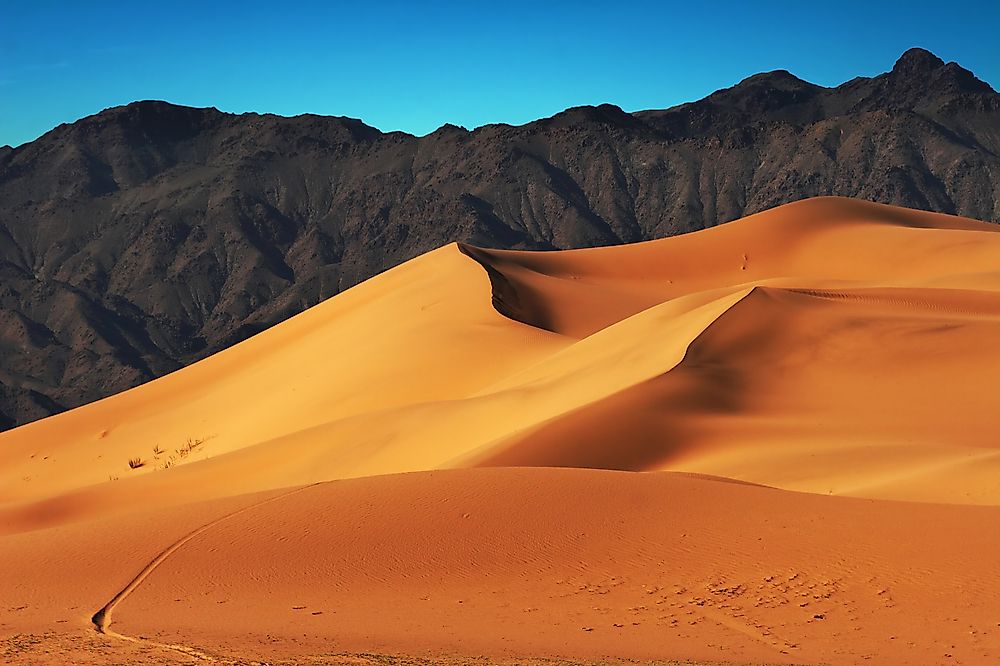What is the Mongolian Death Worm?

The Mongolian death worm, natively known as Olgoi-khorkhoi, is a creature that is alleged to exist in the Gobi Desert of Mongolia. The term “Olgoi-Khorkhoi” is loosely translated in the local language to mean "intestine worm," referring to the creature’s red blood-like color and shape of the creature. The creature is described to be between two and five feet long and can generate static electricity and spit corrosive saliva. Researchers and historians have not found concrete evidence pointing to the existence of the creature, and many believe that it is a mythical creature. The native people of the Gobi Desert, however, claim that they have encountered the creature although they cannot provide the evidence of the encounter. The native communities claim the worm can kill in fearsome ways including electrocuting its preys and spitting the corrosive venom from a distance.
Appearance
The worm is said to be about 2 to 5ft long and is thick bodied. Roy Chapman Andrews first described it in his 1926 publication “On the Trail of Ancient Man." Andrews cites the Mongolian prime minister who describes the creature as two feet long, sausage-shaped and lacks both the head and the legs.
Habitat and Behavior
Those who encounter the worm claim that it lives in the Southern or Western parts of the Gobi Desert. Publication by Ivan Mackerle in 1987 states that it travels underground creating waves on the sand. Native Mongolians claim that the worm can kill from a distance by spitting on its prey or electrocuting it. They further claim that it lives in holes below the ground and spends a majority of its life hibernating and only resurface during the wet and rainy season. Mongolians believe that any physical encounter with the worm results in tremendous pain and in some instances, instant death.
Seeking the Death Worm
Due to the creature’s fearsome behavior and unique characteristics, several intrepid explorers have set out expeditions to the Gobi Desert with the aim of determining the truth behind the existence of the creature. Armed with modern state of the art equipment including night vision and motion detection cameras, the researchers spent weeks in the desert hoping to get a footage or photo of the creature. The researchers interviewed witnesses in the community who claim to know where the creature is but, despite their efforts, no single hard evidence of its existence was documented. The researchers were convinced that its existence is nothing but merely a legend and that the local communities must have been encountering a common species of snake. They compared the Mongolian death worm to the Himalayan Yeti or the North American Bigfoot who have been reportedly sighted but no concrete proof of their existence exists. No skeletons of the animals have been found although desert environments are known to preserve carcasses better than other environments adding to the belief that its existence is just but a legend. The existence of the worm, however, cannot be fully dismissed, and to date, more researchers are still visiting the desert hoping to document it.











